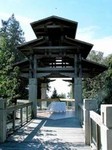
13-11-2016 - A story celebrating teaching excellence at UBC — innovative, evidence-based and committed to transforming the student learning experience.
As an associate professor of applied biology at UBC, Maja Krzic knows there’s much more to soil science than what students will typically pick up in lectures and labs. Recognized as an expert in soil sciences with numerous teaching awards to her credit — not to mention an internationally recognized compendium of open-source courses and educational resources in soil sciences — one might assume Krzic’s approach would be that of a traditional ‘sage on the stage’ academic. But Krzic believes in hands-on learning and knows she can push students towards a whole new level of learning by getting them out into the fresh air and looking at the forest and soil in a natural setting.
In her never-ending quest to make her classes memorable, Krzic has brought real-world learning to her students. Supported by a UBC Teaching and Learning Enhancement Fund (TLEF) grant, Krzic teamed up with Richmond, BC-based mobile app developer 14Oranges Software Inc., UBC Studios and graduate students to create the in-the-field gaming quest, Forest Humus Forms Quest, on the Questtogo app. Using the GPS on their iPhones, the app dispatches students to find different types of soil and plants in the forest and has them answer questions as they go exploring. “We are basically guiding students through the steps a professional scientist goes through when he or she does these observational tasks in real life,” says Krzic. As a result, students retain the information better by having completed the real-world, hands-on observational investigation.
It’s motivating; the students’ results are shared on a classroom scoreboard and count toward a partial lab mark. Students can and do play the quest numerous times in order to boost their grades. More than being extrinsically motivating, the game is a powerful way to scaffold learning across different modalities. “We’ve uploaded various photographs to help students with the quest,” says Krzic. “The repetition and the visual prompts are useful for complementary learning.”
Finding innovative ways to learn is part of Krzic’s approach; she recognizes the importance of taking the pulse of what students are currently interested in and incorporating it into her teaching to pique this interest. “I have to grab their attention in the Introduction to Soil Science course as best I can since students are not even aware of the existence of soil science,” Krzic explains. “I want to use relevant methods in my curriculum by using technology that students use in their daily life.”
It’s this commitment to continuous enhancement and improvement of learning that fires up Simon Bates. As academic director and senior advisor of teaching and learning, Bates provides leadership to the UBC’s Centre for Teaching, Learning & Technology. He too is passionate about discovering better ways to teach and helping other faculty to bring these innovations into their own pedagogies: “I started years ago with a background in physics, asking scientific questions about how students learn. I was inspired by an excellent colleague to develop a deep interest in teaching and how students learn.”
So when Bates and Krzic meet, the conversation naturally revolves around the opportunities to enhance teaching and learning in their respective disciplines. “I don’t know the first thing about soil science,” grins Bates, “but when I’m with Maja I understand through a pedagogical perspective what she’s trying to achieve. That’s how I see my role — helping different academic communities see the similarities between their work as far as teaching and learning goes. There are differences between the disciplines, sure. But it’s all still learning.”
Come along as Krzic explains the Forest Humus Forms Quest app to Bates in one of UBC’s living labs. Together — and with other faculty and teaching experts — they represent how UBC is constantly innovating and advancing pedagogy so the learning experience is relevant and meaningful to students.



